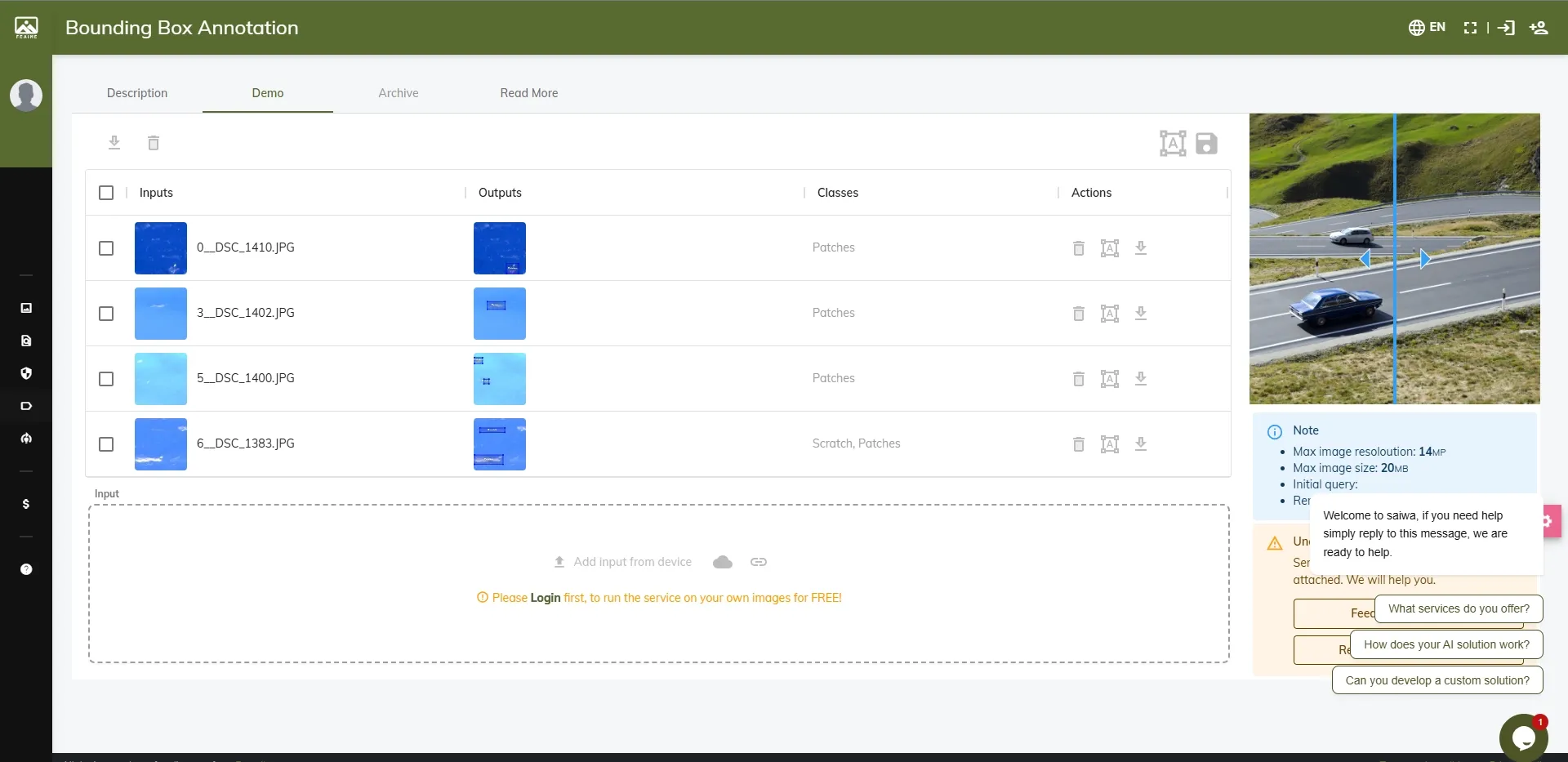Free Bounding Box Annotation Tool
Introduction
The reliability of any object detection model hinges directly on the quality of its training data. At its core, bounding box annotation is the most scalable method for localizing objects, yet achieving the required precision for production-grade AI remains a significant engineering hurdle. Platforms like Saiwa’s Fraime address this challenge by transforming data labeling into a streamlined, accessible service. This technical guide moves beyond basic concepts to explore the critical reasons for using these tools, examine their real-world impact across key industries, and outline the essential criteria for selecting the right Bounding Box Annotation Tool Free.

Real-World Applications of Bounding Box Annotation Tools

The theoretical benefits of precise annotation directly translate into significant practical and commercial impact across numerous industries. This process is not an academic exercise but a mission-critical step fueling real-world AI solutions. Below are just a few sectors being transformed.
Retail and Inventory Management
Models trained with this data automate inventory tracking on shelves, power cashier-less checkout systems, and analyze in-store shopper behavior without manual intervention.
Autonomous Vehicles and Traffic Analysis
For self-driving cars, the real-time detection of vehicles, pedestrians, and traffic signals is a safety-critical function that relies entirely on meticulously annotated training data.
Healthcare and Medical Imaging
In radiology, bounding boxes are used to highlight and identify tumors, lesions, and other anomalies in X-rays, CT scans, and MRIs, assisting in faster and more accurate diagnoses.
Warehousing and Robotics
Automated systems use object detection to identify, grasp, and move packages in complex warehouse environments, increasing logistical efficiency and reducing manual labor.
Seeing these diverse applications, it's clear that the quality of annotation underpins success. Platforms like Sairone leverage this precise data for complex agricultural tasks like crop yield estimation, while the Fraime suite provides foundational services such as face detection to developers building their own custom applications.
Why Choose Bounding Box Annotation Tool Free

When evaluating any annotation software, specific features determine its true value and impact on project timelines. A robust Bounding Box Annotation Tool Free must be assessed on more than just its price tag. The following criteria are essential for making an informed choice.
Ease of Use and Annotation Speed
An intuitive and clean user interface is paramount. The tool must be designed to minimize clicks and streamline workflows, directly accelerating the labeling process.
Export Format Compatibility
The ability to export annotations in standard formats like COCO (JSON), Pascal VOC (XML), or YOLO (TXT) is non-negotiable for ensuring interoperability with major deep learning frameworks.
Collaboration and Workflow Support
Effective tools, particularly web-based ones, provide project management features that allow multiple annotators to work on datasets simultaneously while maintaining quality control.
Support for AI-Assisted Labeling
Modern platforms incorporate semi-automated features, such as using a pre-trained model to suggest initial boxes, which an annotator can then quickly refine, drastically reducing manual effort.